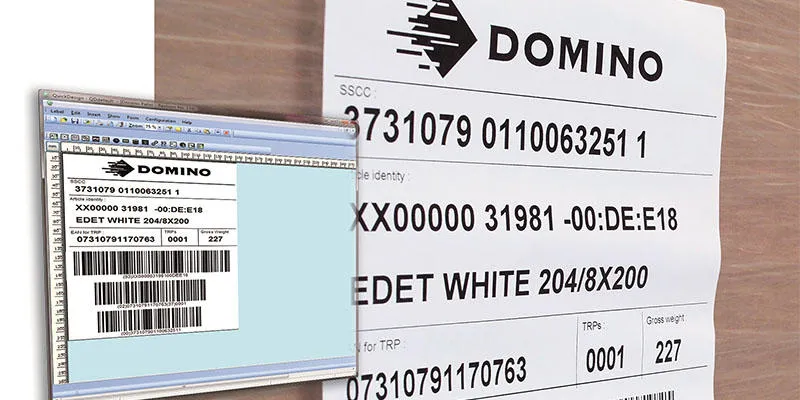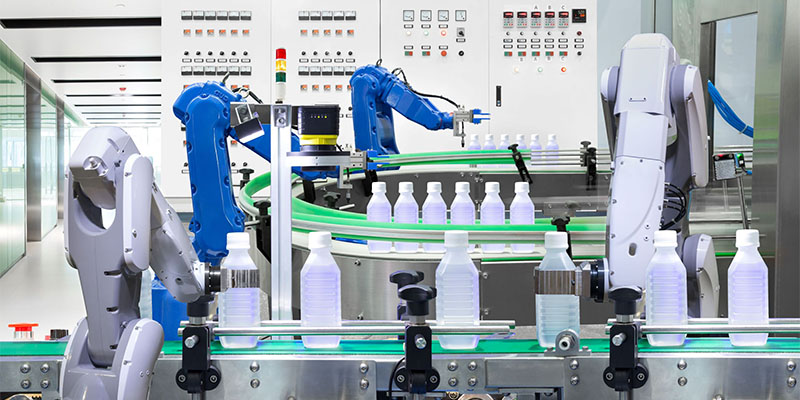We’re in the midst of an industrial revolution. Industry 4.0 is an umbrella term that covers a multitude of technological advances that are transforming the world’s manufacturing and production industries. This means that every individual machine, system, and set of processes across the factory and throughout the enterprise will be integrated and connected to the internet. It’s as much an evolution of existing automated systems (like assembly line robots or packaging equipment), as it is a revolution. This unprecedented level of connectivity allows information to be captured at every point on the production process and throughout the supply chain. The resulting Overall Equipment Effectiveness (OEE) data can then be analysed and managed to make every manufacturing sequence as fast and accurate as possible.
Simply put, the Holy Grail of maximum efficiency could be realised with Coding Automation. Adem Kulauzovic, Director of Coding Automation, at Domino Printing Sciences plc, highlights the five ways in which you can achieve this through coding and marking.

1. Defeating downtime through proactive monitoring
Manufacturers want peace of mind that their printers will remain operational at all times, and utilising Industry 4.0 concepts, such as Integration and Cloud Computing, makes this feasible. By using an array of integrated sensors to automate system monitoring and send data to the Cloud, engineers can use this information to monitor their printers and detect any reliability issues.
With this type of technology, this can be done remotely – there is no need for engineers to go to a customer site to diagnose a fault. If a fix is required, engineers can turn up on site prepared with the knowledge and any spare parts they need. Additionally, the use of the Cloud will ensure engineers are automatically alerted of any faults and potential issues with the printers which enable issues to be managed faster and resolutions sought before they impact the production line. The data collected by the Cloud can also be used to discover trends and provide root cause analysis that can be used to determine proper preventative maintenance in the future. A proactive approach and remote management is a powerful weapon in defeating downtime.
2. Empowering customers through Automation and IIoT
It’s not just support teams and engineers that can monitor printers; customers also have valuable insights into their printer operations at their fingertips.
With the use of a connected online system, a customer can check the status of their printers from any location, remotely diagnose faults, plan for refills and reorders by watching ink levels and usage. They can set alerts if, for example, ink levels reach a dangerously low level – and can take action before downtime occurs – all without physically needing to be at the printer’s location. By monitoring cleaning and equipment maintenance schedules, the longevity of the printers and their components is increased. It’s also key to remember that users don’t have access to this information for just one printer, production line, or plant. The IIoT (Industrial Internet of Things) allows users to compare the performance across all lines, plants, and sites, enabling them to take a global approach to optimise production efficiency.
3. Eliminating recalls caused by operator error
When errors are introduced, the impact can be detrimental and significant. Consider that the average human makes one mistake for every 300 characters entered. Incorrect information entered on printers by operators results in costly recalls and reworks. It’s a significant cause of unplanned production downtime. Integrating printers with factory automation systems, such as MES (Manufacturing Execution System) and ERP (Enterprise Resource Planning) systems enables labelling data to be coordinated automatically without the need for human input.
Switching from manually operating each printer to the centralised management and automated coordination of jobs, labels, and data removes the risk of human error and can prevent coding and marking errors and can provide essential production data on your factory floor.
4. Seamless interoperability through standardisation
Communication standards enable the seamless transfer of data between equipment and factory systems to reduce setup, support, and development costs. They provide a universal method to collect and share production information across production areas; measuring and adjusting production throughput while reducing the risk of data inconsistency across different pieces of production equipment.
If you imagine a production line in its entirety, data and instructions flow through a variety of equipment that is often supplied by different companies – devices like printers, check weighers, vision systems and PLCs, and whole packaging systems from OEMs. By adopting a common data language, setup times are reduced, and there’s no need to develop software to interface between equipment – reducing development time.
5. Protecting consumers through serialisation
There are several solutions for unique identification, aggregation, tracing, and verification of products to meet the challenges of serialisation. These serialisation products can generate encrypted, unique numbers, and enable multiple levels of aggregation and integration with Government databases, enterprise systems, and contract manufacturing organisations.
Online portals enable live tracking and authentication of products through the supply chain. If items are removed or changed during production, or damaged during transit, the associated serial numbers are decommissioned, and the data in the central repository is updated. Scanning products at the point of purchase gives assurance to consumers and retailers. For example, pharmacies can validate medicines before dispensing, and customers (via smartphone apps) can check food products are safe before they purchase them.

Don’t just survive – thrive!
Industry 4.0 is not just a revolution but an evolution of technology, attitudes, and techniques across every section of the world’s manufacturing and production environments. The benefits of the fourth Industrial Revolution are clear to see. From increased performance and profitability, to customer empowerment, to servitisation and serialisation, each advantage is working towards the ultimate goal for any production environment: maximum efficiency.
However, Industry 4.0 cannot be achieved overnight. Due to the breadth of changes, from both a cultural and technical standpoint, this transformation will require time to take effect. Yet this transformation is happening, and it is a truly unique opportunity for us not just to survive – but thrive as innovators and early adopters while the world’s latest Industrial Revolution steadily marches on.
Related: To Error is Human